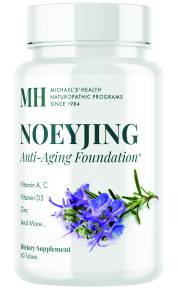A sticky situation

The nonstick surface known as Teflon makes omelet-flipping a lot easier, but we now know it’s at a price. Polytetrafluoroethylene (PTFE, or Teflon) can cause flu-like symptoms if the pans are overheated and even kill pet birds. PFOA (perfluorooctanoic acid), a chemical that’s used to create PTFE, can increase the risk of bladder and kidney cancers in people who work with the stuff. According to the EPA, PFOA has the potential to “bioaccumulate and biomagnify” in wildlife, is readily absorbed after being eaten, accumulates in the blood, kidneys, and liver, and poses developmental and reproductive risks. Not good.
I’ve been using alternatives for years, and have had reasonable success. But I was upset when my fave anodized steel Calphalon started being infused with “polymers” to make it nonstick – and that’s when I stopped buying new ones.
My cast-iron pan is nicely seasoned and works for a lot of foods most people would cook in a nonstick pan, but it’s also huge and heavy, and not appropriate for puddings and polenta and the like. I’d made a homemade pudding in an old Calphalon saucepan (anodized, no polymers) but the milk and cornstarch in the pudding combined to make a gluey mess along the bottom and sides of the pan. The result: a messy cleanup and lumps in the pudding.
So I tried an Ecolution PFOA-Free Hydrolon Non-Stick saucepan. It’s a super light pan, which means it won’t work well for every purpose, but its manufacturer says Hydrolon is a water-based solvent marketed by Ecolution, which pledges not to be used on coatings that contain PFOA.
I made the same pudding again with the new saucepan – and in a hurry – and the result was quite successful. What little clung to the side was easily wiped out with a sponge, though it’s also dishwasher safe.
I’ve also been perfecting a technique for frying eggs in anodized steel and enameled pans, with mixed results. The best trick I’ve found is to put about a teaspoon of water in the pan with the eggs so they don’t brown or stick. A lid can help basically steam the eggs, and keep them from sticking, but the pan must be watched very closely. And timing of the flip and the scoop is completely up to the cook!
Anyway, while a saucepan isn’t the best tool for eggs, I figured I’d try out this “eco-surface” on my local browns. Aside from not being able to slide them out of the pan when they were ready, it worked perfectly: no browning, no sticking.
But watch out for “greenwashing,” the deceptive practice of naming a product so it sounds sustainable or healthy but it isn’t. Pans aren’t exempt. For example, according to Consumer Affairs, the Orgreenic brand of nonstick pans “isn’t made with any green or recyclable materials. It’s called Orgreenic simply because it’s green. That’s the only reason.” You know, the COLOR green. It is literally—greenwashed.
Others, like the Ecolution pan, have some legitimacy. GreenPan uses a ceramic coating called Thermolon, which the company says is free of lead, cadmium, PTFE, and PFOA, and emits 60% less CO2 in its production than other pans. The company also uses upcycled stainless steel for handles and upcycled aluminum for the pan bodies. (Anyone concerned about aluminum, take note.)
And, in the course of writing this, I was also pleasantly surprised to learn that Calphalon had come up with a PTFE-free version called Simply Calphalon several years ago. Asked, a Calphalon rep told me this: “The Ceramic Nonstick cookware does not include PFOA, PTFE, lead or cadmium.”
What it IS made up of is "proprietary information." Still, I think I know what I might be asking for this Christmas?
Read the Environmental Working Group’s word on Teflon.
Donna Moxley
Donna Moxley is the former managing editor at tasteforlife.com.
Don't Miss a Thing!
Get the latest articles, recipes, and more, when you sign up for the tasteforlife.com newsletter.

